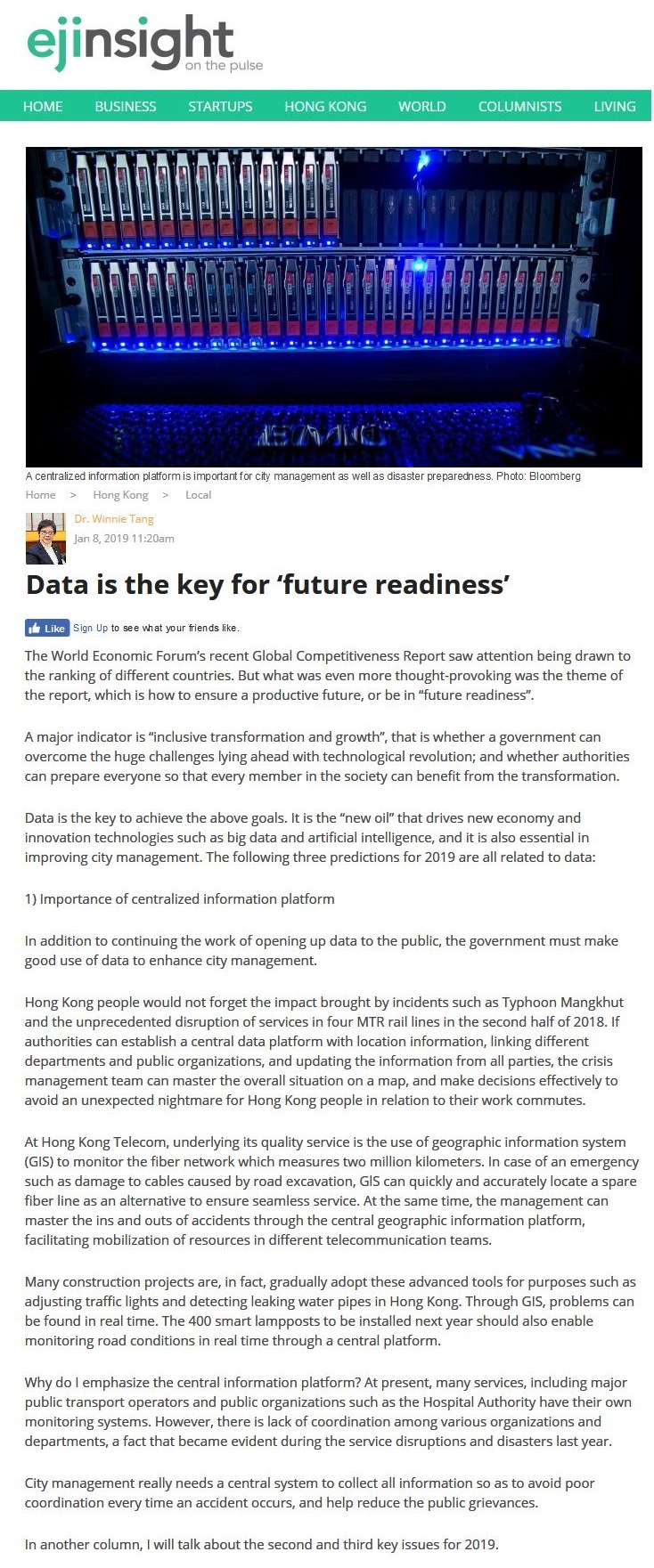網上版請按此

Data is the key for 'future readiness'
The World Economic Forum's recent Global Competitiveness Report saw attention being drawn to the ranking of different countries. But what was even more thought-provoking was the theme of the report, which is how to ensure a productive future, or be in "future readiness".
A major indicator is "inclusive transformation and growth", that is whether a government can overcome the huge challenges lying ahead with technological revolution; and whether authorities can prepare everyone so that every member in the society can benefit from the transformation.
Data is the key to achieve the above goals. It is the "new oil" that drives new economy and innovation technologies such as big data and artificial intelligence, and it is also essential in improving city management. The following three predictions for 2019 are all related to data:
1) Importance of centralized information platform
In addition to continuing the work of opening up data to the public, the government must make good use of data to enhance city management.
Hong Kong people would not forget the impact brought by incidents such as Typhoon Mangkhut and the unprecedented disruption of services in four MTR rail lines in the second half of 2018. If authorities can establish a central data platform with location information, linking different departments and public organizations, and updating the information from all parties, the crisis management team can master the overall situation on a map, and make decisions effectively to avoid an unexpected nightmare for Hong Kong people in relation to their work commutes.
At Hong Kong Telecom, underlying its quality service is the use of geographic information system (GIS) to monitor the fiber network which measures two million kilometers. In case of an emergency such as damage to cables caused by road excavation, GlS can quickly and accurately locate a spare fiber line as an alternative to ensure seamless service. At the same time, the management can master the ins and outs of accidents through the central geographic information platform, facilitating mobilization of resources in different telecommunication teams.
Many construction projects are, in fact, gradually adopt these advanced tools for purposes such as adjusting traffic lights and detecting leaking water pipes in Hong Kong. Through GIS, problems can be found in real time. The 400 smart lampposts to be installed next year should also enable monitoring road conditions in real time through a central platform.
Why do I emphasize the central information platform? At present, many services, including major public transport operators and public organizations such as the Hospital Authority have their own monitoring systems. However, there is lack of coordination among various organizations and departments, a fact that became evident during the service disruptions and disasters last year.
City management really needs a central system to collect all information so as to avoid poor coordination every time an accident occurs, and help reduce the public grievances.
In another column, I will talk about the second and third key issues for 2019.
Dr. Winnie Tang
Adjunct Professor, Department of Computer Science, Faculty of Engineering and Faculty of Architecture, The University of Hong Kong